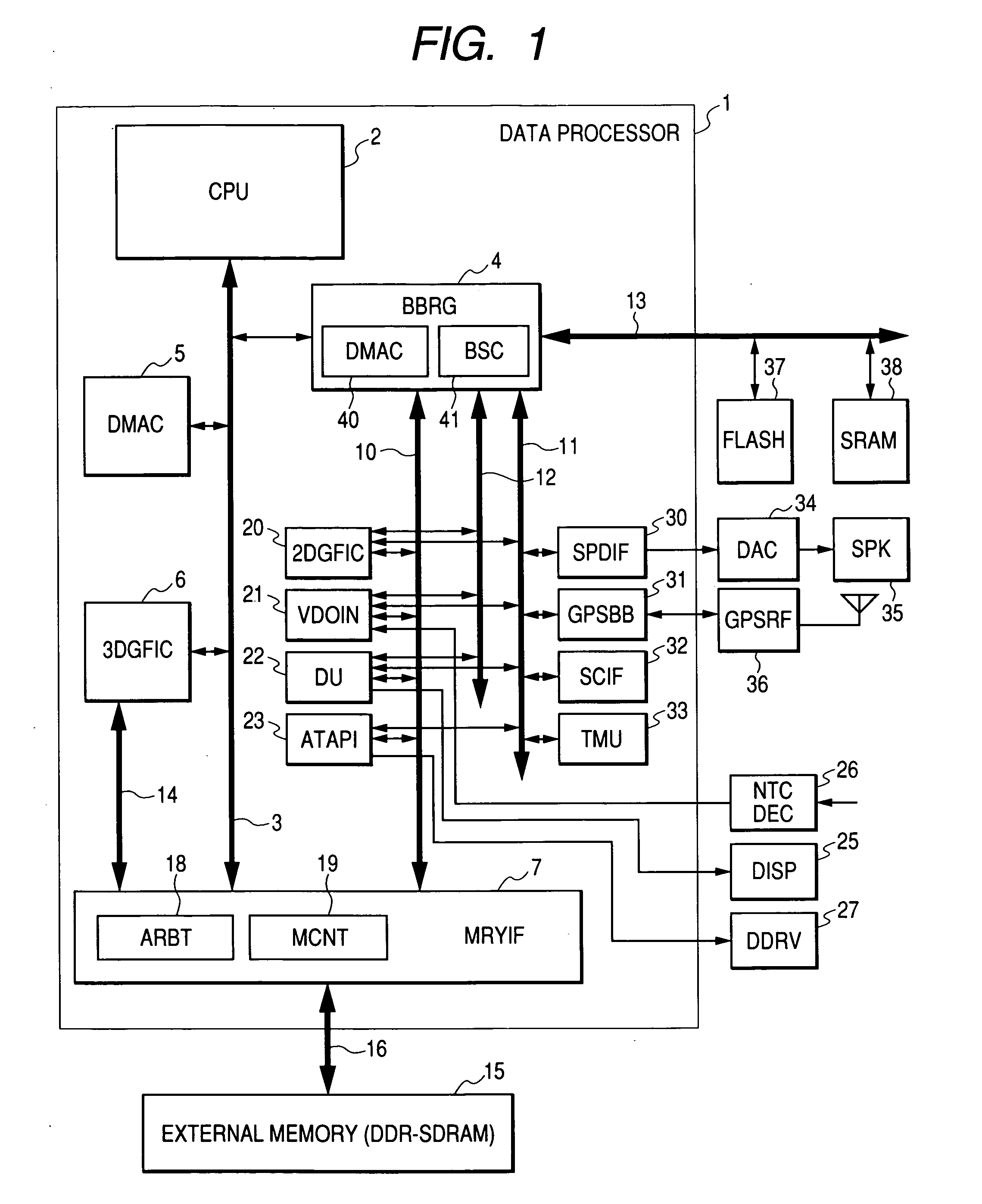Data processor and graphic data processing device
a data processor and graphic data technology, applied in the field of graphic data processors, can solve the problems of unnecessarily long wait time until the cpu obtains the right of the pixel bus, the data transfer latency deteriorates, and the cpu may deteriorate the data processing speed, so as to increase the speed of the data transfer with the central processing unit, increase the wait time, and increase the effect of the speed of the graphic data processing
- Summary
- Abstract
- Description
- Claims
- Application Information
AI Technical Summary
Benefits of technology
Problems solved by technology
Method used
Image
Examples
Embodiment Construction
[0052] Graphic Data Processor
[0053]FIG. 1 illustrates a navigation system using a graphic data processor according to an embodiment of the invention. A graphic data processor 1 shown in FIG. 1 is, although not limited, formed on a single semiconductor substrate (semiconductor chip) made of single crystal silicon or the like by a complementary MOS (CMOS) integrated circuit manufacturing technique, or the graphic data processor is included in one package comprising a plurality of semiconductor chips including graphic data processor and memory module or the like.
[0054] The graphic data processor 1 has therein a CPU (Central Processing Unit) 2. To a first bus 3 to which the CPU 2 is connected, a bus bridge circuit (BBRG) 4, a direct memory access controller (DMAC) 5, a 3D graphics module (3DGFIC) 6 as a three-dimensional graphics data processing module for performing a three-dimensional graphic data processing such as a process of drawing a three-dimensional image, and a memory interf...
PUM
 Login to View More
Login to View More Abstract
Description
Claims
Application Information
 Login to View More
Login to View More - R&D
- Intellectual Property
- Life Sciences
- Materials
- Tech Scout
- Unparalleled Data Quality
- Higher Quality Content
- 60% Fewer Hallucinations
Browse by: Latest US Patents, China's latest patents, Technical Efficacy Thesaurus, Application Domain, Technology Topic, Popular Technical Reports.
© 2025 PatSnap. All rights reserved.Legal|Privacy policy|Modern Slavery Act Transparency Statement|Sitemap|About US| Contact US: help@patsnap.com



